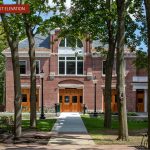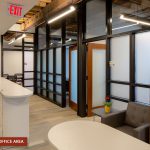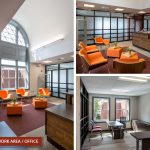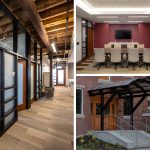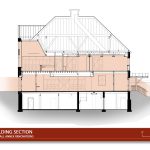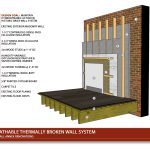City Hall Annex Renovation
The design team was asked to find space for co-locating three City departments, housed at separate sites. Options included renovating an abandoned 1905 fire station adjacent to City Hall, demolishing that building and building new in the same location, or looking at remote sites. Community interest was mixed; some expressed interest in saving the former fire station, others were concerned about cost and viability. After carefully evaluating the building’s structural integrity and calculating renovation costs, the decision to renovate was reached.
Design challenges and solutions:
Façade – The condition of the original brick and granite façade was unknown, as it was concealed behind a flat brick veneer and glass-domed elevated connector to City Hall that were added in the 1970’s and 1980’s. Through forensic investigations, research and grant funding, restoring the original façade was ultimately included in the $2.9M project budget.
Historic Wall System – The exterior brick wall was examined for its structural integrity and found to be sound. Insulating the wall was a concern, as changing the hydrodynamics of the brick by insulating could slow the release of water and cause the freeze/thaw cycle to expedite deterioration. Hydrophilic insulation and a humidity variable diffusion membrane were selected to ensure the longevity of the existing wall. The system lets water vapor pass through, allowing the wall to “breathe” while also providing significant amounts of insulation.
Second Floor framing – “It shouldn’t be standing” was the engineers’ consensus after evaluating the existing second-floor framing system. At some point a 4” topping slab was added to the wood-framed second floor, adding considerable dead load. The design replaced the slab with a lightweight leveling system. The preserved historic fabric is accentuated, and the original brown board sheathing and floor joists are exposed alongside new, blonde, rough sawn reinforcing wood members. Much of the first-floor ceiling was left open to the structure above.
Site description:
The building sits on an urban site flanked by City Hall and the current fire station, within a park-like setting. It is accessed from a main thoroughfare at the front and from municipal parking at the rear. The site was re-graded to provide an accessible route from both areas without utilizing ramps. A brick seating area with café tables, and granite curb walls matching those at City Hall, were added at the building’s front entry for all to enjoy the renovated, 11,424 sf building.
The project was completed in 2017.




